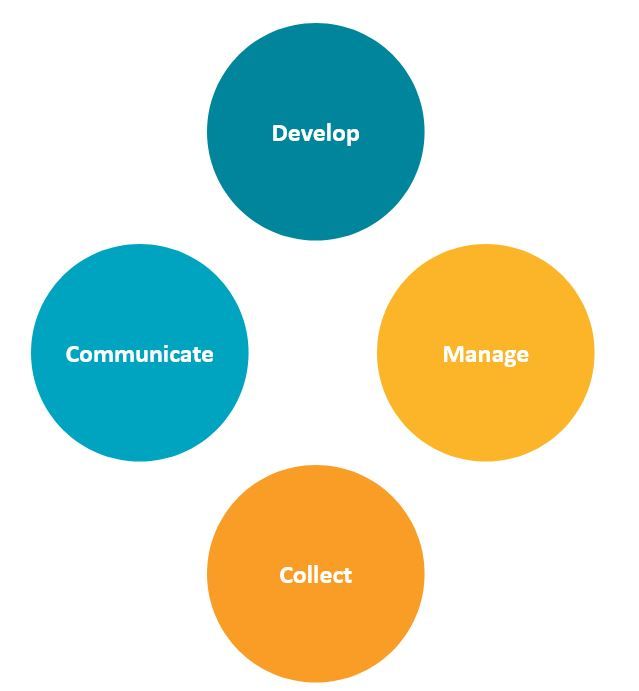Build Positive High-Expectations School Communities
-
Module Introduction5 Topics
-
Purpose and Rationale17 Topics|2 Tests
-
Cover
-
Lesson Objective
-
Opening the Lesson
-
Building Positive High-expectations School Communities
-
Behaviour Management and Effective Teaching
-
Using Effective Behaviour Management Strategies in a Positive High-expectations Classroom
-
Parents and Effective Behaviour Support
-
Teach Behaviour Expectations
-
Implement Effective Practices
-
Leading Values and Behaviours
-
School Vision
-
School Mission
-
Vision and Mission
-
Check your understanding
-
Test your understanding
-
Review
-
Lesson Completed
-
Cover
-
A Team Approach to Behaviour Management13 Topics|2 Tests
-
Building School-Wide Capacity17 Topics|2 Tests
-
Cover
-
Lesson Objective
-
Opening the Lesson
-
Positive High-expectations Behaviour
-
Prevent and Support
-
Positive Behaviour Intervention and Support (PBIS) Features
-
Three Behaviour Support Levels
-
Identifying and Teaching Expectations
-
Approach to Social-Emotional Learning
-
Effective Practices and Team Problem-solving
-
Data to Identify Problems and Monitor Progress
-
Culturally and Contextually Relevant
-
Factors of Successful School Behaviour Models
-
Check your understanding
-
Test your understanding
-
Review
-
Lesson Completed
-
Cover
-
Teaching Expectations and Character Strengths14 Topics|2 Tests
-
Cover
-
Lesson Objective
-
Opening the Lesson
-
School-wide Expectations
-
Values and Shared Expectations
-
Values Cultivate Positive Behaviour
-
Values Cultivate Positive Behaviour
-
Character Strengths
-
Developing Character Strengths School-wide
-
Teaching Values, Expectations and Character Strengths
-
Check your understanding
-
Test your understanding
-
Review
-
Lesson Completed
-
Cover
-
Teaching Rules and Routines15 Topics|2 Tests
-
Cover
-
Lesson Objective
-
Opening the Lesson
-
Established School-wide Domains
-
Clarify Expectations
-
Teach Expectations
-
Teaching Routines
-
Explicit Direct Instruction Model
-
Effective Teaching of Rules and Routines
-
Effective Teaching Components
-
Integrating Routines
-
Check your understanding
-
Test your understanding
-
Review
-
Lesson Completed
-
Cover
-
Principles of Reinforcement15 Topics|2 Tests
-
Cover
-
Lesson Objective
-
Opening the Lesson
-
Consequences
-
Positive and Negative Reinforcement
-
Use Positive Reinforcement to Acknowledge Positive Student Behaviour
-
Punishment and Discipline
-
Shaping Behaviour
-
Continuum of Reinforcement
-
Misconceptions about Reinforcement
-
What Reinforcement Is and Is Not
-
Check your understanding
-
Test your understanding
-
Review
-
Lesson Completed
-
Cover
-
School-Wide Systems for Shaping Behaviour14 Topics|2 Tests
-
Cover
-
Lesson Objective
-
Opening the Lesson
-
Promoting Positive Behaviour
-
Strengthening Expected Behaviours
-
Reinforcing Character Strengths
-
Feedback and Reinforcement
-
Reinforcement Strategies
-
Effective Teaching and Behaviour
-
Active Supervison
-
Check your understanding
-
Test your understanding
-
Review
-
Lesson Completed
-
Cover
-
Motivation for Misbehaviour15 Topics|2 Tests
-
Cover
-
Lesson Objective
-
Opening the Lesson
-
Defining Behaviour
-
Behaviour as Communication
-
Motivation to Approach or Avoid
-
Correcting Behavioural Errors
-
Mentoring Intervention
-
Defining Levels of Problem Behaviour
-
Effective Teaching Reduces Misbehaviour
-
How you use the information you find to decrease the misbehaviour
-
Check your understanding
-
Test your understanding
-
Review
-
Lesson Completed
-
Cover
-
Continuum and Hierarchy of Consequences16 Topics|2 Tests
-
Cover
-
Lesson Objective
-
Opening the Lesson
-
System of Consequences
-
Standard Response to Behaviour Errors
-
Teacher-managed Behaviour
-
Positive Verbal Responses
-
In-class Strategies
-
Office-managed Behaviour
-
School-wide Strategies
-
A Successful System of Consequences and Responding to Minor/major Behaviour Challenges
-
Choosing from the Continuum
-
Check your understanding
-
Test your understanding
-
Review
-
Lesson Completed
-
Cover
-
Collecting Data for Decision Making13 Topics|2 Tests
-
Team Problem-Solving14 Topics|2 Tests
-
Engaging Parent, Families and Communities15 Topics|2 Tests
-
Cover
-
Lesson Objective
-
Opening the Lesson
-
Importance of Partnerships
-
Developing a Partnership
-
Strengthening Partnerships with Families
-
Engaging Parents
-
Influencing Conversation: Example One
-
Influencing Conversation: Example Two
-
Basic Messages
-
Holding an Influencing Conversation with Parents
-
Check your understanding
-
Test your understanding
-
Review
-
Lesson Completed
-
Cover
-
Module evaluation survey1 Topic
Participants 724
Teaching Assistant Responsibilities
ddewell@goodtogreatschools.org.au August 8, 2023

Teacher Responsibilities
Teachers manage student behaviour in their classrooms and in common areas of the school. In a positive high-expectations school, the school team see all students as ‘their’ students and all common areas as ‘their’ responsibility.
Teachers develop and implement whole-class and individual positive reward systems that link to the larger school-wide system. They communicate positive high-expectations in interactions with students and parents.

Teachers participate in coaching and feedback from the principal and coaches. They contribute to problem-solving discussions. They apply action items from coaching and feedback to professional practice.
Data are important for positive high-expectations behaviour management. Teacher collect and enter behaviour management data in the Data Management System.
When concerns arise, teachers contact the Behaviour Management Team and/ or school leaders. Teachers may also be a part of the Behaviour Management Team.

